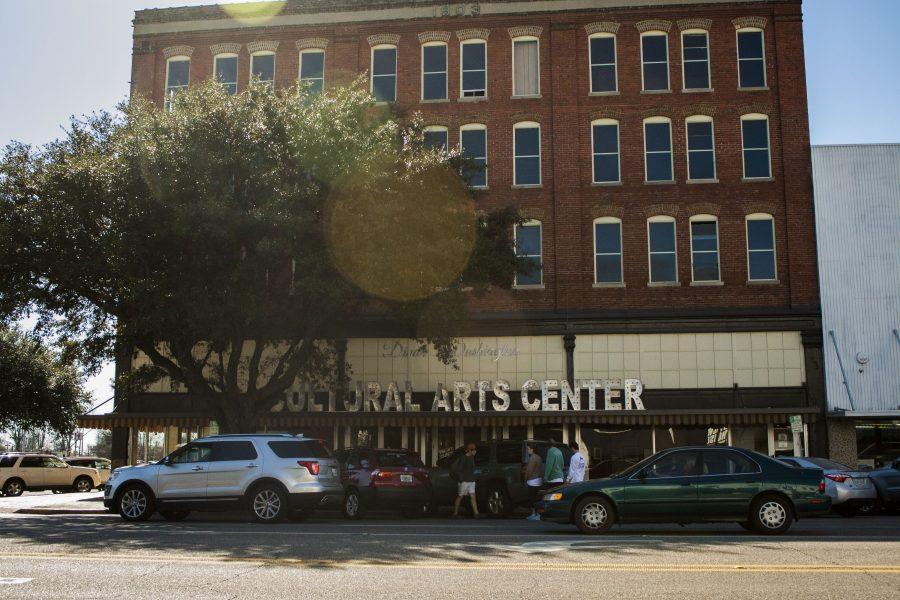In the deepest pit of hell, Lucifer stares you down. His hands are on the shoulders of Adolf Hitler and Joseph Stalin, and behind him are more of history’s most reviled figures, including Napoleon and Genghis Khan. On the floor of the fiery cavern, a red apple–the symbol of original sin.
This is the scene in a work by David Gosselin, an Alabama oil painter who creates mural-like work on large canvases. An exhibit of his art is opening at Dinah Washington Gallery in Tuscaloosa on June 3.
“[Minimalism] seems like a sacrilegious waste of materials,” he said. “I’m not an art critic, but I wouldn’t consider some of those things, like Pollock–that’s just scribbling. There’s a lot of that, and why people like him is beyond me.”
Gosselin’s large-scale works are typically paintings on four-by-five foot canvases. He uses oil, and usually works on several pieces concurrently to avoid getting “mental blocks.” At this pace, one painting usually takes about a year, to come together.
The inspirations for his work often come from translating common phrases–like “matter of time” or “appetite for destruction”– into scenes. Gosselin comes up with the different figures, details and points of interest in his work over time.
“Sometimes I know exactly what’s going to happen,” he said. “Most of the time, I’ll just leave it wide open so I’m not locked into one specific thing. It kind of takes the fun out of it. If you know exactly what’s going on, you might as well be doing a coloring book.”
Citing influences, Gosselin praised Dutch painter Hieronymus Bosch, famous for his “Garden of Earthly Delights,” a massive painting of an hedonistic paradise featuring hundreds of tiny, bizarre details. He also said he loves the art of Frank Frazetta, an illustrator known for creating the covers of many sci-fi and horror comics and books.
Gosselin was born in Rhode Island, where he took an interest in painting as a child. His creative drive was later rekindled by an art teacher at Livingston University, which is now the University of West Alabama. Gosselin has stayed in the Livingston area ever since, as the warm and friendly environment of the South suits him.
“Up in New England, people are really irascible, because of the weather,” he said.
According to Linda Lamaroux, an old friend of Gosselin who was formerly involved with the Arts Council’s Junior League Gallery, the artist was known in college as “Wizard,” because of his lanky build, long curly hair, and moustache. In addition to painting and academics, he also played in a rock band.
During his career, Gosselin never focused on art professionally. He painted houses as a day job, and devoted free time to his work. The monotony of manual labor helped the artist’s creative side.
“When you paint houses for a living, it’s not exactly cranial,” he said. “The only thing you have to remember is if you’re on a ladder, and, if you are, how high. It leaves a lot of time. You listen to music and think.”
Lamaroux recommended Gosselin for the exhibit at Dinah Washington. She praised the artist’s creativity and the depth of his work.
“He thinks up things that are really weird. But [his paintings] are beautiful, and there’s so much detail in each one of them,” she said.









